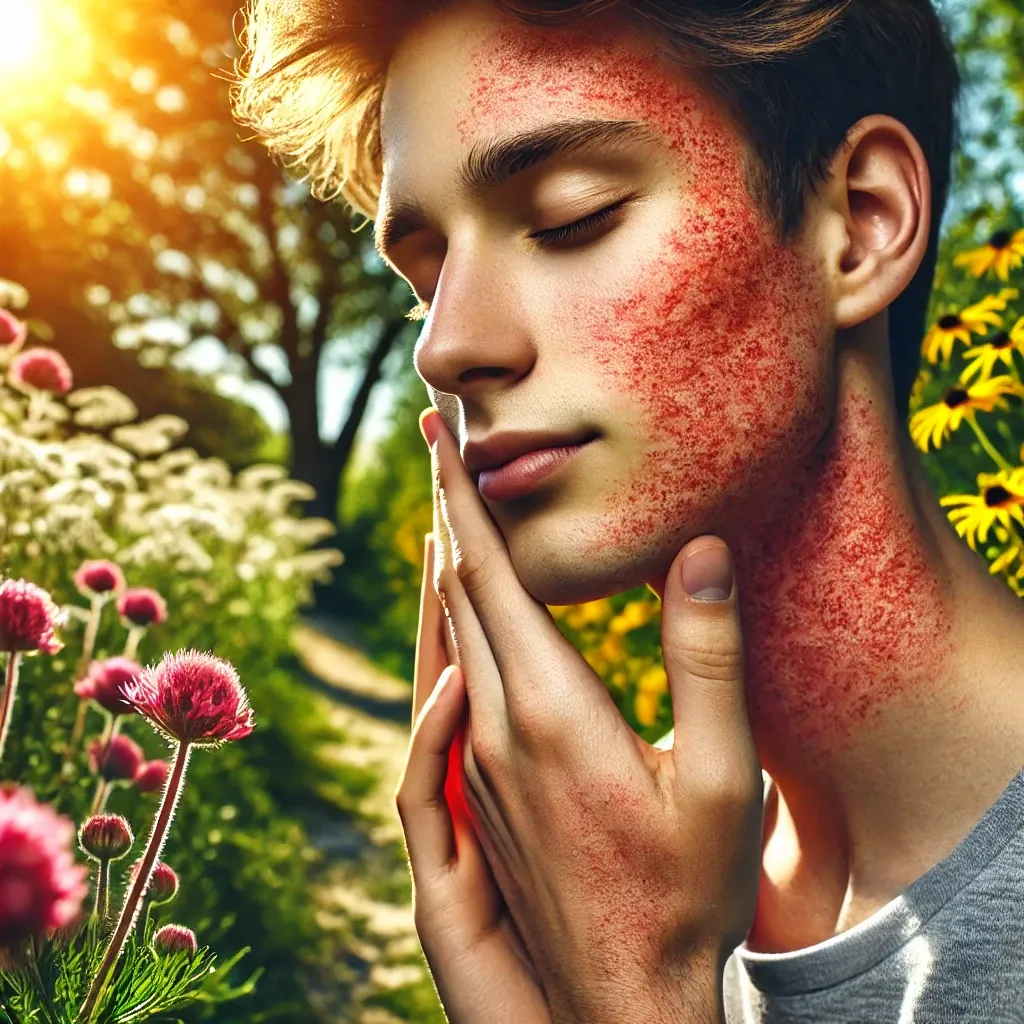Ever noticed your skin reacting to the seasons? Learn about seasonal skin allergies, hives, and scalp itching, and how different weather changes can affect your skin health. Can you prevent or manage these symptoms effectively? Let’s explore!
As the seasons change, so do the many ways our bodies react to the environment. Whether it’s the first bloom of spring or the crisp chill of fall, our skin can sometimes show signs of distress. Seasonal skin allergies, seasonal hives, and scalp itching are just a few of the common complaints people face as they adjust to changing weather patterns. In this article, we’ll break down these conditions, how they are linked to seasonal changes, and the best ways to manage them.
Seasonal Skin Allergies: Why Do They Happen?
Seasonal skin allergies are more common than many realize. When the weather shifts, the body’s immune system may misinterpret harmless substances like pollen, dust, or mold as threats, leading to allergic reactions on the skin. Common symptoms of seasonal skin allergies include redness, irritation, hives, and even eczema flare-ups. The most common allergens associated with these reactions include:
-
Pollen: In spring and summer, the release of pollen from trees, grasses, and flowers is a major trigger for allergies.
-
Dust mites: Found in homes, especially when air conditioning or heating systems stir up dust.
-
Mold spores: Mold thrives in warm, humid weather, particularly during fall.
-
Pet dander: Many people are allergic to pet dander, which can be more noticeable when animals spend more time indoors during colder months.
-
Changes in air quality: Pollution levels can rise with seasonal changes, especially in urban areas, contributing to skin reactions.
The skin’s role in responding to these allergens is essential for our overall immune defense, but it can also lead to discomfort. So, why do these reactions happen more frequently in certain seasons?
During the warmer months, plants release more pollen, increasing exposure. In fall, mold spores become more prevalent due to damp conditions, and in winter, homes are often sealed tightly, trapping allergens inside. Your skin’s protective barrier might not always be able to handle these fluctuating environmental changes, especially when pollen counts or humidity levels spike.
Managing Seasonal Skin Allergies
While it’s impossible to fully avoid allergens, there are effective strategies to manage and reduce symptoms:
-
Keep your home allergen-free: Use air purifiers and clean air ducts regularly.
-
Moisturize regularly: Applying a rich moisturizer can help protect the skin’s barrier from irritation.
-
Shower after being outdoors: This removes allergens that may have settled on your skin or clothes.
-
Use hypoallergenic products: Choosing skin products free from fragrances and dyes can help reduce irritation.
For a more detailed guide on managing seasonal skin allergies, click here.
Seasonal Skin Hives: What Causes Them and How to Treat Them
Seasonal skin hives, also known as urticaria, are another common problem that can occur as the weather shifts. Hives are raised, red welts on the skin that can appear suddenly and are often a result of an allergic reaction. While they are most commonly triggered by food, medication, or insect stings, seasonal changes can also contribute to their development.
Common seasonal triggers for skin hives include:
-
Pollen: Particularly from grass, trees, and weeds.
-
Temperature fluctuations: Rapid changes from hot to cold weather can shock the skin.
-
Sun exposure: For some, increased sun exposure during warmer months can trigger hives.
-
Sweating: Increased sweating in the summer months can irritate the skin and cause outbreaks.
-
Airborne allergens: Dust, mold, and other particles carried in the air can cause hives.
The hives typically appear when the skin is exposed to something the immune system perceives as harmful. This leads to the release of histamine, which causes blood vessels in the skin to swell, resulting in the familiar welts. For many, hives are temporary, disappearing after a few hours. But for others, the condition may persist for longer periods.
Treating Seasonal Skin Hives
Here are some methods to alleviate the discomfort of seasonal skin hives:
-
Antihistamines: These medications can help reduce the body’s allergic response and calm the hives.
-
Cold compresses: Applying a cool compress to affected areas can provide relief from itching and swelling.
-
Avoid triggers: Identifying and avoiding the environmental allergens causing the reaction is crucial.
-
Wear loose clothing: Tight clothing can irritate the skin and exacerbate hives.
Managing hives in the context of seasonal allergies requires understanding your triggers and minimizing exposure. It’s always a good idea to consult with a healthcare professional if you experience recurrent or severe outbreaks.
Seasonal Scalp Itching: A Problem During the Cold and Hot Months
Seasonal scalp itching is another common issue people face as the seasons change, especially between winter and spring or summer and fall. Scalp itching can be caused by dry air, changes in humidity, and the buildup of allergens on the scalp. Symptoms include:
-
Flaky scalp: Dryness causes dandruff, which can lead to itching.
-
Redness and irritation: Often the result of an allergic reaction to environmental triggers.
-
Oil buildup: Warm weather and sweating can increase oil production on the scalp, leading to itching and discomfort.
-
Hair product buildup: As people change products with the seasons, residues can irritate the scalp.
-
Mold and dust: These seasonal allergens can settle on the scalp, causing irritation.
How to Relieve Scalp Itching
To relieve seasonal scalp itching, try the following:
-
Moisturizing scalp treatments: Use oils or serums designed for the scalp to combat dryness.
-
Regular washing: Washing your hair regularly can remove buildup of sweat, oils, and allergens.
-
Shampoo with soothing ingredients: Opt for shampoos containing ingredients like aloe vera or tea tree oil to calm the scalp.
-
Wear hats or scarves: When exposed to pollen-heavy areas, covering your scalp can help protect it from allergens.
Seasonal scalp issues may seem minor, but they can be persistent. So, finding a routine that keeps your scalp moisturized and free from irritants can go a long way in ensuring comfort year-round.
Conclusion
The changing seasons bring both beauty and challenges to our skin and scalp. Seasonal skin allergies, hives, and scalp itching can disrupt our daily lives, but by understanding the causes and triggers of these conditions, we can take proactive steps to minimize discomfort. Whether it’s adjusting skincare routines, avoiding allergens, or using over-the-counter treatments, taking action can help keep your skin healthy throughout the year. Remember, your skin is your body’s largest organ—caring for it should be a priority!
“Take care of your skin, and it will take care of you.”






